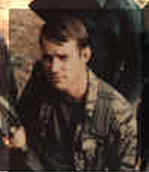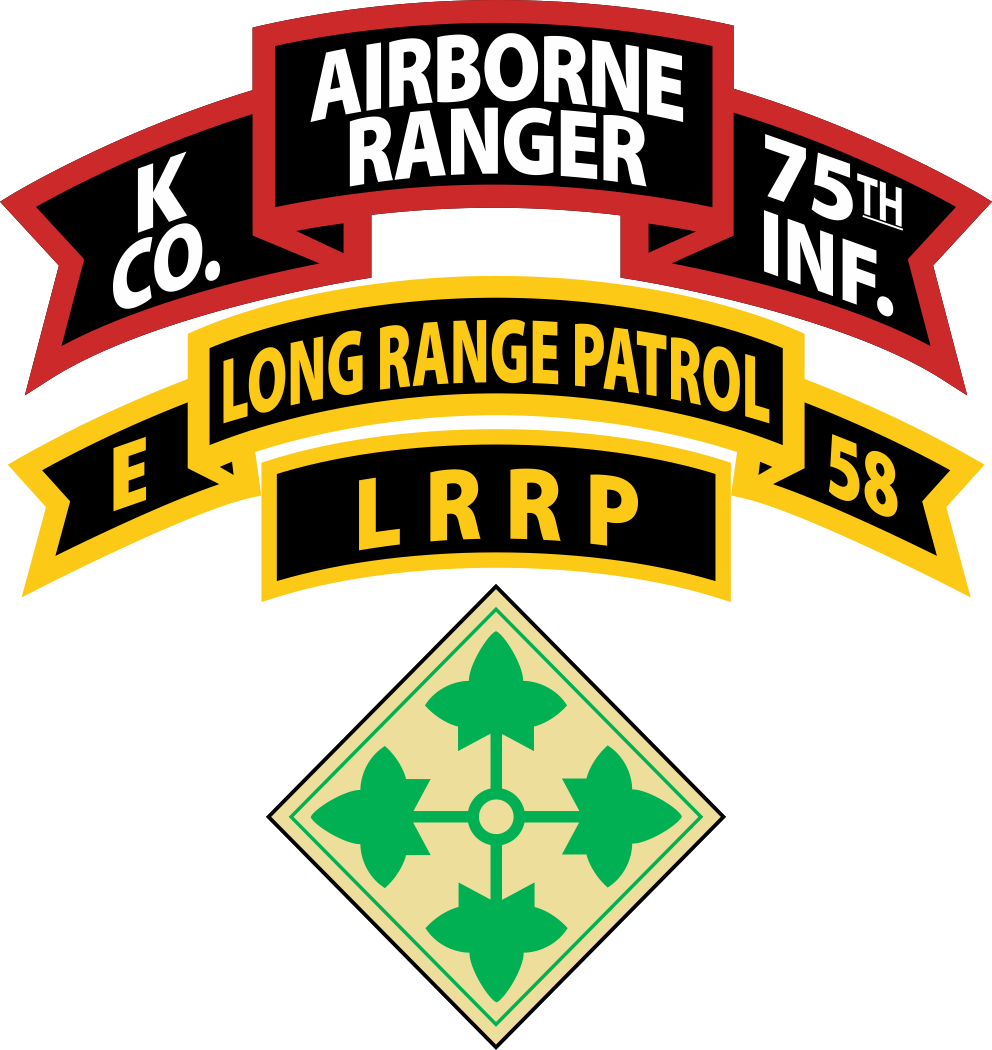
Recollections - Frank Camper

In Their Words …
LRRP Recollections
Second Brigade, Fourth Infantry Division
Author
Frank Camper was one of the early volunteers for the Second Brigade, Fourth Infantry Division LRRP. In 1988, Frank wrote his recollections of his service in the LRRP. The book is titled “LRRP: The Professional” and is presented on the linked page.
The following was submitted by Frank. The first is a letter from the Fourth Division outlining the transfer of Second Brigade LRRP to K Company, 75th Rangers. The second is a narrative Frank wrote about the relationships of the LRRPs with Special Forces, Special Operations Groups, and Delta.
Article 2
Letter to Frank Camper
Transfer of Brigade LRRP To K Company, 75th Ranger Regiment
DEPARTMENT OF THE ARMY HEADQUARTERS
2D BRIGADE, 4TH INFANTRY DIVISION “HIGHLANDERS”
APO San Francisco 96262 AVDDB-C0 25
April 1970
Mr. Frank Camper
Birmingham, Alabama 35218
Dear Mr. Camper:
Thank you for your interesting letter concerning your assignment with the 2d Brigade LRRP platoon. The following is an attempt at answering your question of how the outfit is doing at present and your letter is being forwarded to the CO of the Ranger Company for any comments he may have.
On 6 October 1969, LRRP activities within the Division were reorganized to more efficiently use available LRRP assets. Prior to this LRRP activities were divided between the Division controlled Company K (Ranger) 75th Infantry and the brigade controlled LRRP platoons.
This organization produced duplication of effort and increased requirements for assets, both men and material. Neither the brigade nor the Division had the capability to monitor a large target area without difficulty with command communication and reporting. After the reorganization was completed, the brigade LRRP platoons were absorbed into Company K, 75th infantry under the operational control of the Division G3. The centralization of LRRP assets is now being tested. Early indications are that the reorganization has resulted in a much improved 75th Infantry.
The most effective employment of Rangers is one in which a large number of teams are deployed in a given area to screen an enemy route of approach or withdrawal. An example of this employment occurred in early October when the 2d Brigade was withdrawn from its AO northeast of Pleiku, a 12-team LRRP platoon, with a platoon leader and control team, was deployed to PLEI MRONG and staged out of the Special Forces camp there. An average of eight teams were operational at all times, screening the mountain range west of PLEI MRONG, with the other four used as a rotational back-up for standdown and further patrol preparation.
When the 24th NVA Regiment began its move eastward toward Highway 19 on 12 October, its movement was reported by screen, and for four days the enemy was subjected to direct artillery and air strikes, and lost twelve men to ground contact with Ranger teams. Given early warning, the 4th Division had moved a mechanized battalion into the PLEI MRONG area by the time the 24th Regiment emerged from the mountains. In a series of contacts the enemy lost over 100 men KIA and his offense was preempted.
I hope I have answered your questions. Good luck on the publication of your book, “LRRP”.
Sincerely,
William E. Conger Jr.
Colonel, Infantry
Commanding BACK
Article 2
What Is A LRRP? By Frank Camper
LRRP, SF, SOG, or DELTA?
This is a general distribution to those I think might be interested, particulary some original members of our LRRP platoon. I am rewriting my book LRRP. This time around I have access to info I couldn’t originally get.
The Second Brigade LRRPs were a special experiment that worked. Our AO in the Central Highlands, between Pleiku and Kontum, was where the Special Forces had been running their Project DELTA long range patrols. The 4th Division commander after Christmas 1966 was General Peers, ex-OSS and an old Burma hand. Westmoreland gave Peers wide LRRP-mission latitude, and allowed him to use all the SF camps in our tri-border (Laos, Cambodia, Vietnam) area for LRRP bases.
We were lumped in with DELTA, and in my 201, that time is listed as: “2nd Bde LRRP USARPAC-V 5th SFG.” Peers was experimenting to see if infantry-level LRRPs could do the same job as the more exotic DELTA project. The question he wanted answered was could we operate farther out, with less support, than normal LRRP ops. In short, could we do what DELTA did? DELTA was technically separate from SOG. DELTA was all SF, while SOG was joint-services. DELTA’s missions were supposed to stop at the border, and SOG was supposed to take over there. The reality was there was a little double-dipping, and DELTA sometimes went over the border. Our little rag-tag provisional LRRP platoon got caught up in the big time. Technically, DELTA was working with us rather than us working with them. This exposed us to DELTA and in some cases, SOG information.
Our recon teams operated out of SF camps, and sometimes got mission briefings in SF ops bunkers. We took it in stride as part of the job. Incidentally, Peers LRRP experiment with us worked well enough for him to specifically cite our platoons’ mission and casualty stats, and get Westmoreland to approve two strategic-level non-SF LRRP units in September 1967 for all of South Vietnam. Two ‘MACV” LRRP companies were created, one each for Field Force I and II.
So now if anyone knows enough to ask you if you were LRRP, SF, SOG, or DELTA, you can say “No” … with emphasis. We were Second Brigade LRRPs, in a class by ourselves.
Frank Camper
